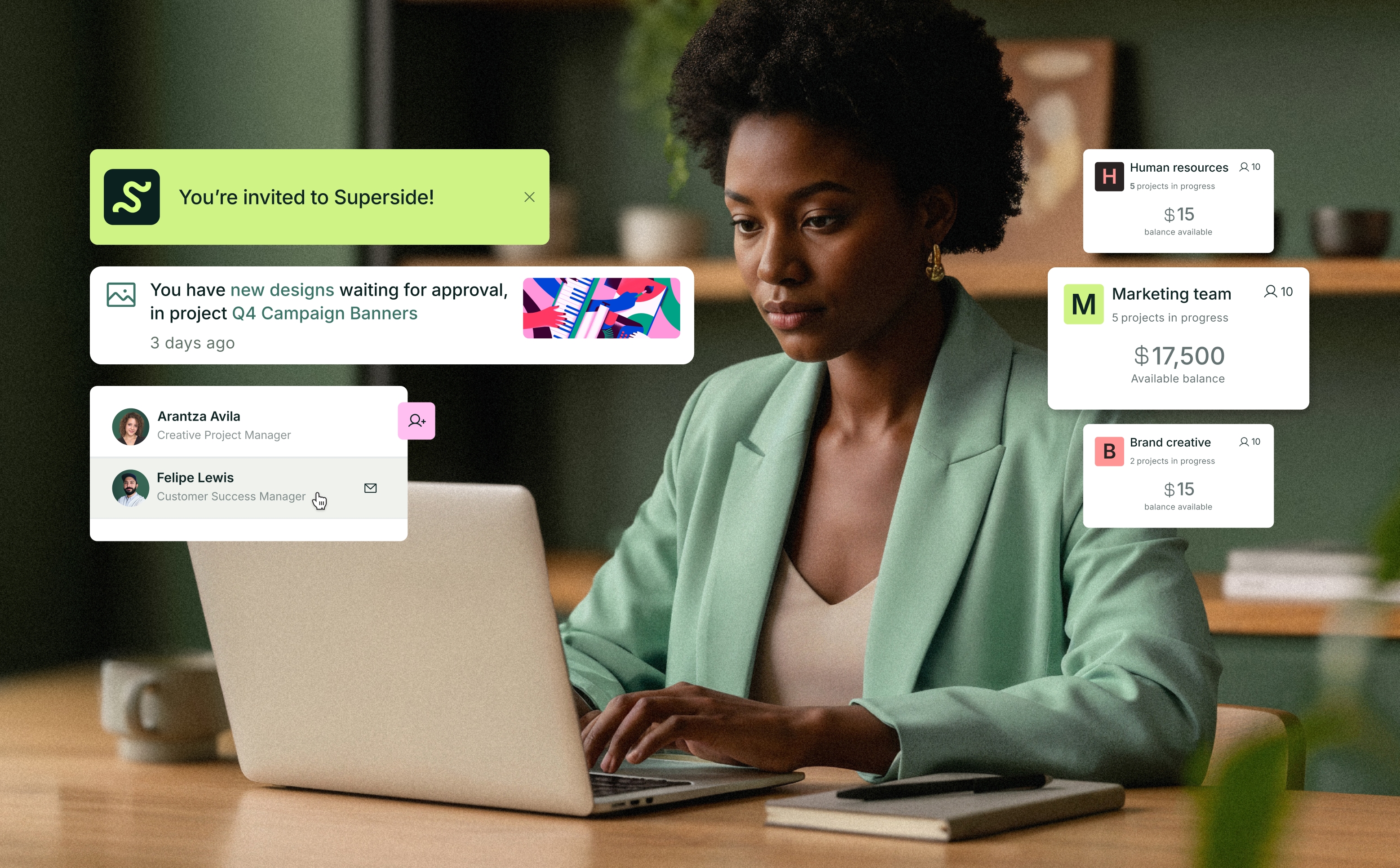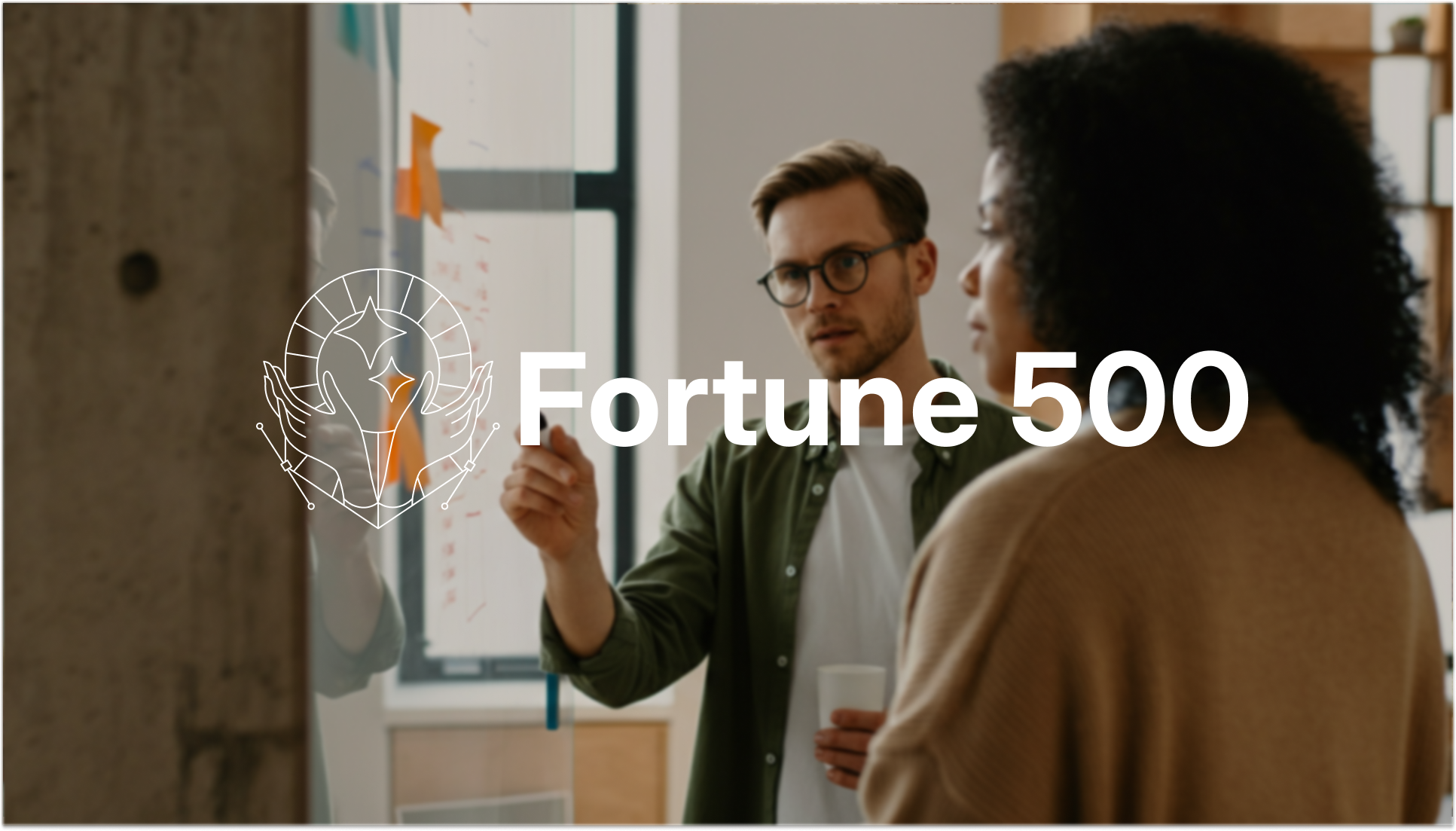
The thing about logos is that it’s easy to spot when they're very good…and very bad. A logo is a symbol that reflects a brand's identity—be it a company, product, or person. From Ancient Egyptian hieroglyphs to pagan symbols scrawled on Stonehenge, logo design long predates modern times.
The modern logos we know today can be linked to the 19th Century when printing symbols on paper to differentiate goods were on the rise. Unlike the logos we have today, the focus was solely for helping people identify brands with little attention to style and the possible impact of the design on its consumers.
Today, the logo design process is an integral part of any brand's identity and is key to the success of a company's branding and marketing strategy.
What we'll cover
Examples of great logo designs
6 tips to make your logo design stand out
Best tools to improve your logo design process
Examples of great logo designs
Once in a while, we come across a logo that's so iconic it serves as a logo design inspiration for decades. Think Google, Apple, Coca-Cola, Nike, etc. These logos are ingrained into our psyche, and with good reason, too—they are memorable and functional—the two vital features of a great logo.
So what makes a logo memorable? Most often, it's its relevance to the company itself or how well it communicates the brand and connects with people on a personal level. The logos are usually simplistic and straight to the point, making it easy for people to recognize and remember them.
To design a functional logo, it has to achieve its primary objective of standing out from the crowd and improving brand recognition. It also has to work well in real-life use cases. Say you're to design a logo for a jewelry maker; what would it look like on packaging materials and even the jewelry itself? A logo optimized for the real world is on the right path to becoming one of the greats.
Here are some examples of iconic logos:
Nike
Nike's logo is one of the most iconic logos of all time. It immediately communicates the human drive to succeed and is synonymous with determination and grit. Its simple and familiar design makes it easy for the brand to connect with people, and coupled with its famous slogan: 'Just do it,' it's no surprise the logo is one of the greats.
Starbucks
The Starbucks logo takes a functional approach to its design. Its circular shape works well with curvy objects like coffee cups, which is its primary use case, and its bright colors serve to attract attention. Most importantly, the logo is unique in its industry, making it instantly recognizable.
Apple
What started as an image of Isaac Newton sitting under an apple tree has evolved into a single apple with a bite mark. The Apple logo takes a literal approach to communicate its brand, which makes it both relevant to the company name and unique in its industry. It is also easy to recognize and works well in real-life uses.
The success of Apple's logo is proof that you can design an iconic logo when you follow certain principles like the tips we've shared below.
6 tips to make your logo design stand out
Beyond the beautiful graphics, a lot of time and research goes into every line, shape, color and font that makes up a logo. The logo design process involves market research, audience research and a deep understanding of the company's brand.
Once you know the ‘why' behind a company or product, you can design a logo that conveys its intended message and aids the brand marketing efforts to connect with the target audience on a deeper level.
Regarding the actual visuals of your logo, here are some practical tips and tricks you can apply to make your logo stand out:
1. Keep it simple
Simplicity is the most important tip to make your logo design functional. A good logo is recognizable at a glance. A minimalist approach helps you declutter your design, thus ensuring you promote only the most significant aspect of the brand. It can also be easily integrated into merchandise design elements, like branded t-shirts or custom sweaters.
Twitter's logo evolution is a story of consistent simplification which resulted in one of the most iconic and inspirational logo designs today: a single blue bird.
2. Maximize white space
Maximizing your white space means leaving enough blank spaces around the logo. It helps improve the logo's visual balance and gives it an elegant look while maintaining a scalable design layout.
3. Use authentic typography
"If I had to provide a single most important tip in designing a logo, it would be to avoid common typefaces…" - Erik Pitzer, a Graphic Designer at Illumine8 Marketing & PR, said in a branding interview.
Fonts play a crucial role in communicating the company's brand and personality. They can be used alone or together with icons to form a logo. For example, is the company's brand playful or formal? Let your choice of typography reflect its identity.
Lego
Lego's logo design uses typography that fits its brand-friendly and fun.
4. Use vibrant and versatile colors
Using bright colors is one of the most tested and trusted tricks in any logo design process. Vibrant colors improve brand recognition by up to 80% and evoke strong emotions in people. So identify the ones that reflect your brand personality and work well within your industry. However, don't go overboard: limit your color selection to a maximum of three options.
Also, choose versatile colors to make allowances for different scenarios and backgrounds. Some tools will help you find the right mix of shades and hues for your designs.
5. Take a literal approach to design
If you find yourself stuck in a creative rut, you can always revert to good ol' puns. Take the company's name or catchphrase and make a logo that visually describes it. Be literal with your design—for example, Target.
Target
Target's logo is a bullseye, which rightly represents its name.
6. Align your elements
By aligning all the elements in your logo, you ensure consistent spacing, which keeps the design from looking overcrowded. This, in turn, boosts your brand recognition and the logo's scalability.
Also, follow the principle of visual hierarchy to structure the elements: texts, shapes, etc. This makes the information in your logo easily digestible at a glance. It also makes the logo look well-balanced and professional.
Best tools to improve your logo design process
A quick search on the internet will give you countless logo design tools in seconds, but we have curated a short list of the top 4 tools used by professionals and beginners alike. Here are the best free and paid tools to get you started:
1. Superside
As if we'll start with someplace else. Superside is a fast-rising design tool favorite among agencies and large enterprises. If you're looking to have the top 1% of creative talent in the world work on your brand, then they're your pick. Superside provides continuous design inspiration and quickens your entire logo design process while ensuring you get quality results.
If you don't have design chops, or even if you do but need an expert team to help design the perfect logo, we're just a click away.
2. Adobe Illustrator
Adobe Illustrator is the best software in the design industry for designing logos, icons and more. It offers maximum creative freedom as you can manipulate lines, colors, 3D assets and more to get your designed logo. It also allows for collaboration and works smoothly with other Adobe products like Photoshop and Adobe Fonts.
The downside is that it's expensive, and beginners face a steep learning curve. Fortunately, there are tons of tutorials available on the internet to see you through.
3. Canva
This award-winning graphics design tool is one of the best free software for designs ranging from logos to posters and even video presentations. Canva has many templates that inspire your logo designs and offer significant flexibility and customization to help you design a logo that's just right for you. It's also suitable for both absolute beginners and professionals.
Its downside is that there are limited export formats and the possibility of copyright infringement if used for official purposes on a wide scale.
4. Inkscape
Inkscape is arguably the best free design software regarding customization and scalability. It's an open-source desktop software that offers the most features you can get (for free) and allows you to design illustrations and logos from scratch.
Its downside is it has a steep learning curve and can be slow to roll out updates or fix bugs since it is open-source.
Bringing it all home
A good number of the memorable logos today started with a different design. However, what set them apart from the rest was their dedication to following the best logo design practices to improve. By following the tips mentioned above, you too can design memorable logos, and over time you can create the perfect logo.












